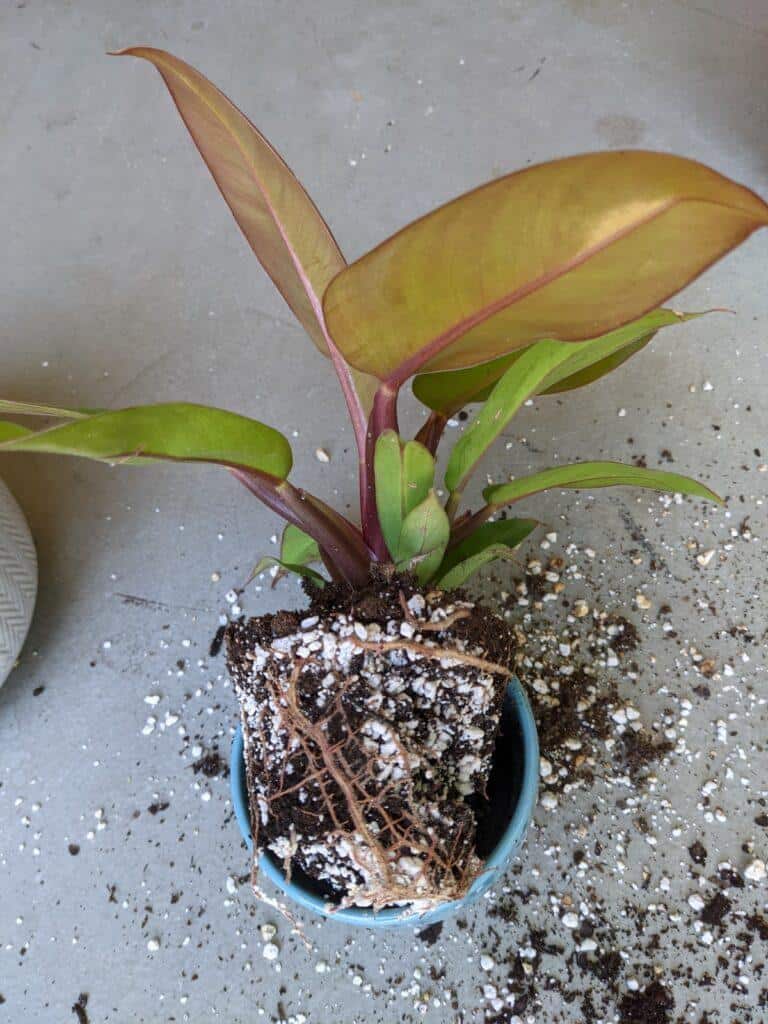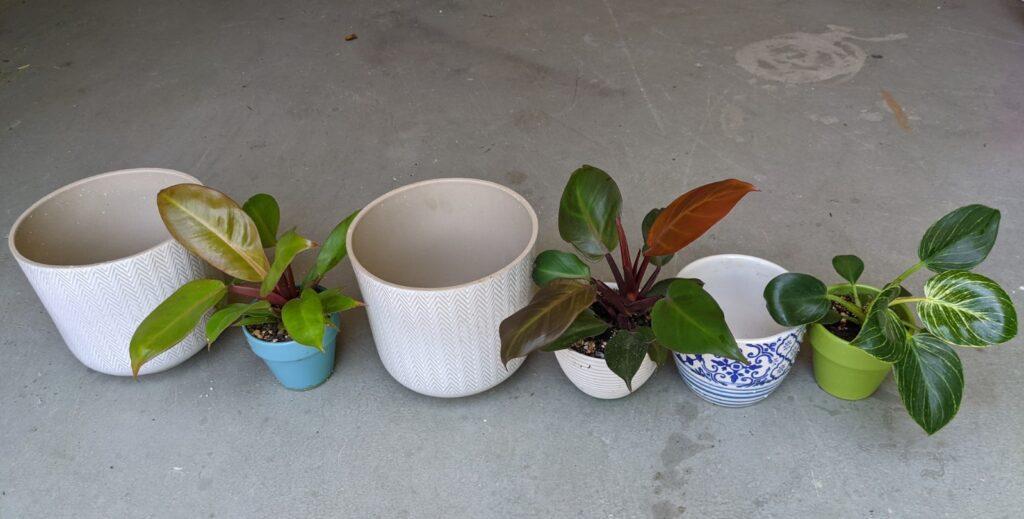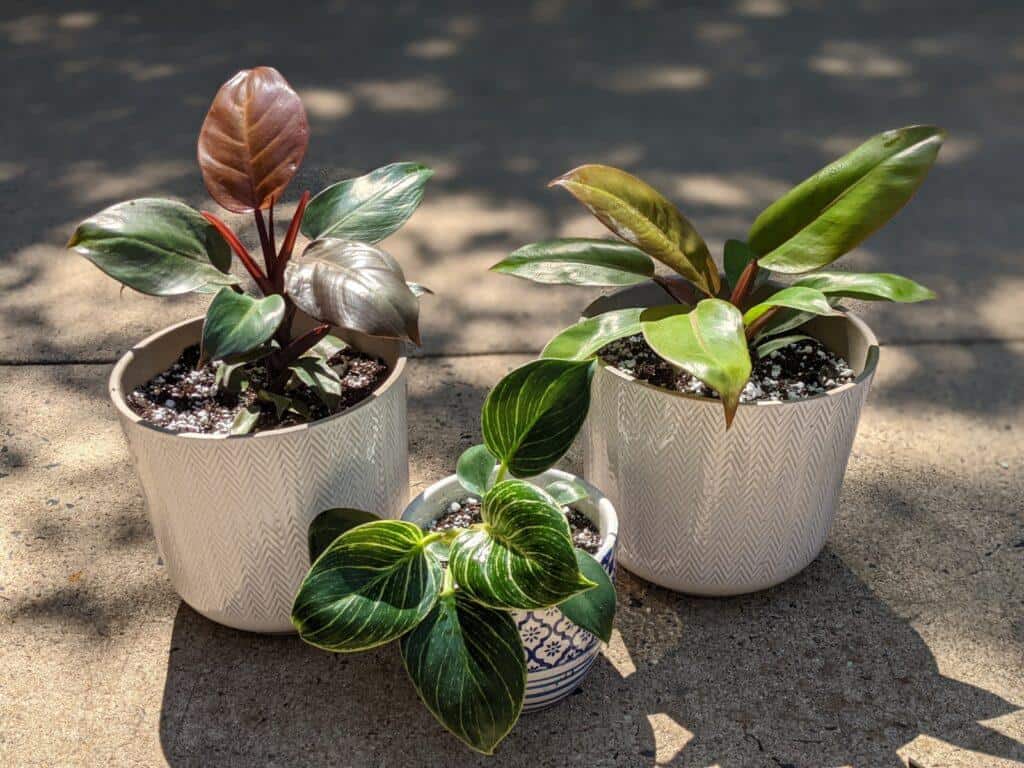Tips to Successfully Repot a Philodendron Prince of Orange
My Philodendron Prince of Orange growth has slowed this summer. I'm used to it growing pretty quickly, so I figured it might be time for a repot to give the roots more rooms to grow. I will cover spotting some of the signs that you need to repot your plant. I'll also go through the steps to repot a Philodendron Prince of Orange.
Back to topPhilodendron Prince of Orange Care
Philodendron Prince of Orange is easy to care for. Below you will see a table addressing proper Philodendron Prince of Orange light, watering, and fertilization requirements. They do well in an east-facing window if you have one. Keep them out of reach of your pets because they are toxic to cats and dogs.
| Light Needs | Watering Needs | Soil Needs | Fertilizing Needs |
| Moderate to bright indirect light. | Top inch should be dry before watering. | Well draining potting soil. | A few times per growing season. |
When to Repot Your Philodendron Prince of Orange
Philodendron Birkin Slow Growth
Philodendron Prince of Orange growing relatively quickly. If your plant is not putting out new leaves at the same rate that you are used to, it may be a sign that you need to repot your Philodendron Prince of Orange. However, take note of the season. All plants grow more slowly, or not at all when the days are shorter during winter. You can confirm your Philodendron is growing more slowly during the growing season by checking the roots.

In the photo above I have pulled my Philodendron Prince of Orange out of its pot to inspect the roots. The roots are visible and you can see the roots have formed a rootball that is the shape of the pot. It's not root-bound, but it could still benefit from a repot. The roots that found the edge of the pot, have grown around the edge, and are even growing up towards the top of the soil line. The roots need somewhere to go, so I will repot this Philodendron Prince of Orange.
Philodendron Prince of Orange has Yellow Leaves
If your Philodendron Prince of Orange has yellowing or browning leaves this may be a sign that you overwatered or underwatered your plant. These are two opposing problems, but you'll be able to check the same way. Stick your finger in the soil. If it is soggy and you have mushy roots, you have overwatered. If it's bone dry, you have under-watered. There are also tools to monitor soil moisture and they're very affordable. This soil moisture meter works wonders. If the moisture reading is high and the soil doesn't progressively dry out over several days, then you have an overwatering problem. Your pot may be too big, the pot make lack drainage holes, or your Philodendron Prince of Orange soil mix doesn't have suitable drainage. The pot fixes are obvious. Repot to a smaller pot or a pot with drainage. To aid drainage in your soil mix you'll need to add some draining medium to your soil like perlite.
Check for underwatering in the same way you would overwatering. Another sign that you have underwatered your plant is if the water runs straight through the pot and the soil does not retain moisture. If you notice this problem your soil has become hydrophobic. Here's a great blog on fixing hydrophobic houseplant soil. If you are able to examine the roots and you see a lot of them circling the pot. A repot to a bigger-sized pot with more soil will help retain some moisture in the pot for longer.
What You Need to Repot a Philodendron Birkin
A New Pot for Your Philodendron Birkin
When you pot up, you should choose a pot that is roughly one to two inches larger in diameter compared to its current pot. If you need to size down because of overwet soil, then you should shoot for a pot that is about an inch larger than the Philodendron Prince of Orange's root ball. If you have overwatered, you should also consider using a terracotta pot because they are breathable and dry quickly. Whatever pot you get, make sure it has drainage holes! Below you can see examples of old and new pots from when I was repotting a bunch of Philodendrons.

Philodendron Prince of Orange Soil Mix
Philodendrons don't need a specific potting mix. Generally speaking, you would be fine using any indoor potting soil. I personally like to use a normal bag of potting soil and then I mix extra perlite to aid in drainage. What works for me is a ratio of 3:1 potting soil and perlite.
Back to topSteps to Repot a Philodendron Prince of Orange
- First you must remove the Philodendron Prince of Orange from its original pot. You may need to hold the plant close to the base where it enters the soil and wiggle a bit if it is difficult to remove. If it's especially root bound, you may need to take a knife or something flat and run it around the inside edge of the pot to loosen the roots (kind of like you do for brownies in a pan).
- Take a good look at the roots. It's always good to check the roots when you repot. Look at the color and texture. Dark brown or mushy roots are signs of rotting. You want firm white or light brown roots.
- Use your Philodendron Prince of Orange soil mix and fill the new pot to the level that you want to place the bottom of the root ball. Place the root ball in the pot. Then back fill soil mix around the root ball.
- You may lightly pack down the soil to help stabilize the your Philodendron in the pot, but do not compact the soil too much. It's not good for the roots.

Do you have questions about your Philodendron Birkin?
Back to top
Add new comment